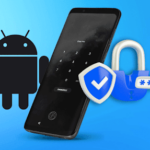India’s move to demonetize and invalidate Rs 500 and 1000 notes was sudden. And it has repercussions that are frankly out of scope for our tech site. But interestingly, this move has thrust upon a uniquely diverse country to pursue an idea – going cashless. Of course, we’re far from actualising it but we’re already seeing street vendors and auto drivers accept Paytm.
And that’s what we’re talking about today. If you’d rather not stand in line for ATMs, try paying for stuff using Paytm. And if you aren’t sure where to start, read our guide below.
Download: Play Store link
What is Paytm?
Paytm is an e-commerce store, bill payment service, transaction management service rolled into one. You can use Paytm to pay money to your friends, or to pay local merchants at retail POS counters.
But you can also buy all sorts of stuff from Paytm (they run on a marketplace model). Plus, you can recharge your prepaid card, pay for DTH, insurance premium, book flights or movies, and even buy certified gold. Paytm does a lot and you can do all of it from their app, with just one account and money from your one Wallet. Speaking about the wallet.
What is Paytm Wallet?
Paytm Wallet is a digital wallet that’s linked to your Paytm account, running inside your Paytm app on your Android phone.
You transfer money to your Wallet using debit/credit card or net banking. Then you use that money in the Wallet to pay for stuff. Any and all of the above. Send money to friends, pay for Uber ride, pay for an auto or buy some cutting chai at your local corner shop (yeah, they’re probably accepting Paytm right now).
Paytm Wallet has a Rs 10,000/month limit. You can extend it to Rs 1,00,000 in your wallet at any point of time by following the Know Your Customer process.
This is where you go to a local Paytm merchant with a photo ID and identify proof to verify your account. If you go with your Aadhar card, you’ll be verified right there using digital biometric scanning.
How Secure is Paytm?
Paytm Wallet is approved by RBI. According to Paytm your money is put into a Escrow account with a reputable bank. For transactions, Paytm uses 128-bit Verisign-cerified encryption. So neither your password or the transaction details are available to anyone.
How To Create an Account
After opening the Paytm app, tap on the “Profile” tab. Then tap on “Hello! Login to Paytm“. Select “Sign up” from top-right.

Enter your phone number and password and tap “Sign up“.

You’ll need to verify your account using a link or OTP to be able to withdraw money.
How To Add Money to Wallet
Before you start spending money, you’ll need to add some to your Wallet.
From the home screen, tap on “Add Money“.

Enter the amount and tap on “Add Money“.
From the next page, you’ll need to add a source for the money. You can use a debit card, credit card or net banking. Details will be saved to make it easier for the next time (except CVV code).
Once your details are filled, tap on “Pay Now“.
You’ll be taken to your bank’s page where you’ll need to enter the OTP or the password. Once that’s done, the transaction will be authenticated and you’ll end up at the Order Summary page. Tap the back button to go back to the home screen.
How To Send Money Or Pay Someone using Paytm
It’s now time to spend the money in your Wallet. You’ll mostly be doing this in two different ways. Either paying someone using their mobile phone number or by scanning a QR code that retail merchants have besides their POS counters, or a QR code generated by your friend.
From the home screen, select “Pay“.

To send the money using mobile phone number, tap on “Mobile no” and type in the phone number. You can also select a contact from your contact book. Then type in the amount and select “Send Money“.
To send using a QR code, tap on “Scan code“. You’ll see the camera view there. Point the camera to the QR code and wait till you get an option to authenticate. Once done, your payment will be made.
You’ll get a confirmation in form of an SMS (so will the receiving part). You can confirm the transaction went through by going into the “Passbook” section.
How To Request Money
For merchants affected by demonetisation, this is the feature of interest. Paytm lets you start accepting payments instantly. For your normal account theres a Rs 10,000/month limit. You can raise it to have max Rs 1,00,000 in the Wallet at any given point and unlimited transactions by getting your KYC process done (we’ve talked about it above). For a merchant, it’s advisable to sign up for Paytm Business account that has no such restrictions (we’ll talk more about it below).
To request money using a phone number, tap on “Accept payment“. Type in the mobile number, the amount and tap “Request money“.

Alternatively, you can also generate a QR code by tapping the QR code icon next to the mobile number field. You can then send this QR code using something like WhatsApp or if the other party is right next to you, just hold your phone up so they can scan the code using the PayTM app.
How To Withdraw Money To Bank Account
At some point, you’re going to want to withdraw the money you’ve collected to your bank account. If you have the basic account, PayTM charges 1% transaction fee till the end of the year (down from 4%). There’s no fee for merchants till the end of the year.
From the home screen, tap on “Pay” and select “Send to Bank“. Fill in your bank details. You can withdraw Rs 100 and higher.
Sign Up for Paytm Business
For someone running a retail business you should look into getting a Paytm Business account from here. This will remove all restrictions from your normal account. If you haven’t done the KYC process you’ll have to pay 1% fee when withdrawing from your account (down from 4%). Till 31st December, withdrawals for KYC members is free of charge.
Your Experience
Has your life been affected by the demonetization? How? Have you adopted the cashless lifestyle? Share with us in the comments below.

















